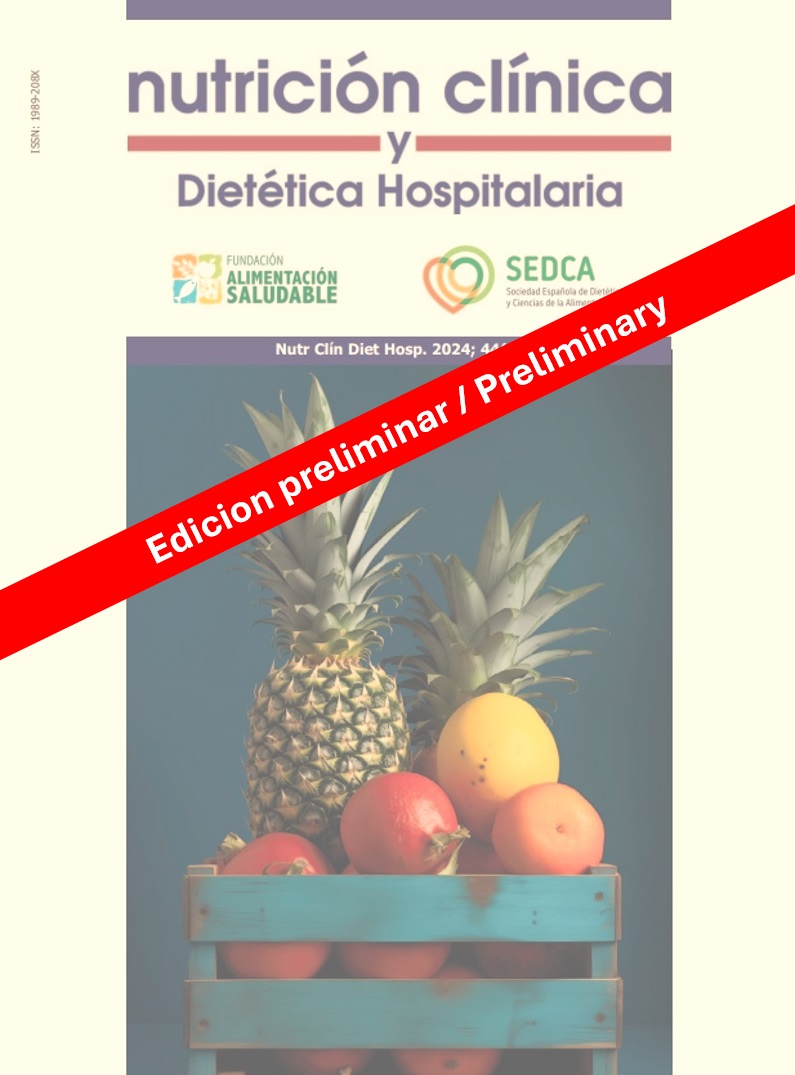Interaction between cupric ion and camu camu fruit (Myrciaria dubia): Generation of free radicals
DOI:
https://doi.org/10.12873/451guijaKeywords:
kinetics, ascorbic acid, fruits, copper, antioxidantsAbstract
Objective: The objective of this work was to investigate the reactivity of bioactive compounds, such as vitamin C, of camu camu with cupric ions.
Materials and methods: The reactivity of the cupric ions with the aqueous extract of camu camu was evaluated by thiobarbituric acid reactive substances (TBARS) method. The effects of Cu2+ concentrations ranged from 0.010 to 0.060 mM were observed. In order to inhibit the formation of TBARS the antioxidant capacity of thiourea, EDTA and mannitol was evaluated. The ascorbic acid content in camu camu was determined by the Jagota assay.
Results: The cupric ions reacted with the aqueous extract of camu camu through an increased generation of TBARS as a function of time. The presence of various concentrations of Cu2+ in the reaction medium increased the generation of TBARS through saturation kinetics. The antioxidant potency to inhibit the generation of TBARS by the effect of copper on camu camu decreased in the following order EDTA> thiourea> mannitol, whose protection constants were 9.6 x 10-6 M, 4.2 x 10-5 M y 4.7 x 10-3 M, respectively.
Conclusions: The study showed that the reactivity of the cupric ions with camu camu generated TBARS and the thiourea, EDTA and mannitol showed antioxidant activity through a concentration- dependent reaction.
References
Adwas AA, Elsayed AS, Asab AE, Quwaydir FA. Oxidative stress and antioxidant mechanisms in human body. J App Biotech Bioeng. 2019;6(1);43-47. DOI: https://doi.org/10.15406/jabb.2019.06.00173
Nimse SB, Palb D. Free radicals, natural antioxidants, and their reaction mechanisms. RSC Adv., 2015;5:27986-28006. DOI: https://doi.org/10.1039/C4RA13315C
Constantini D. Understanding diversity in oxidative status and oxidative stress: the opportunities and challenges ahead. J Exp Biol. 2019; doi:10.1242/jeb.194688, DOI: https://doi.org/10.1242/jeb.194688
Osawa T. Development and application of oxidative stress biomarkers. Biosc Biotech Biochem. 2018;82(4):564-572. DOI: https://doi.org/10.1080/09168451.2017.1398068
Delgado L, Betanzos G, Sumaya T. Importancia de los antioxidantes dietarios en la disminución del estrés oxidativo. Investigación y Ciencia. 2010;50:10-15.
Inoue H, Hirobe M. Disulfide cleavage and insulin denaturation by active oxygen in the copper(II)/ascorbic acid system. Chem Pharm Bull 1986;34(3):1075-1079. DOI: https://doi.org/10.1248/cpb.34.1075
Jagota, S. K. y Col. A New Colorimetric Technique for Estimation of vitamin C Using Folin Phenol Reagent. Anal. Biochem. 1992;127:178-132. DOI: https://doi.org/10.1016/0003-2697(82)90162-2
Gutteridge JMC. Ferrous-salt-promoted damage to deoxyribose and benzoate. Biochem J. 1987;243:709-714. DOI: https://doi.org/10.1042/bj2430709
Guija H, Troncoso L, Guija E. Propiedades prooxidantes del camu camu (Myrciaria dubia). Anal Facultad Medicina. 2005;66(4):261-268. DOI: https://doi.org/10.15381/anales.v66i4.1320
Fornaro A, Coichev N. Ácido L-ascórbico: reacoes de complexacao e de óxido-reducao com algums ions metálicos de transicao. Química Nova. 1998;21(5):642-650. DOI: https://doi.org/10.1590/S0100-40421998000500017
Rowley DA, Halliwell B. Superoxide-dependent and ascorbate-dependent formation of hydroxyl radicals in the presence of copper salts: A physiologically significant reaction? Arch Biochem Biophys. 1983;225:279-284. DOI: https://doi.org/10.1016/0003-9861(83)90031-0
Uchida K, Kawakishi S. Site-specific oxidation of angiotensin I by copper (II) and L-ascorbate: Conversion of histidine residues to 2-imidazolones. Arch Biochem Biophys. 1990;283:20-26. DOI: https://doi.org/10.1016/0003-9861(90)90606-Y
Zhu BZ, Antholin WE, Frei B. Thiourea protects against copper-induced oxidative damage by formation of a redox-inactive thiourea-copper complex. Free Rad Biol Med. 2002;32(12):1333-1338. DOI: https://doi.org/10.1016/S0891-5849(02)00847-X
Shinar E, Navok T, Chevion M. The analogous mechanisms of enzymatic inactivation induced by ascorbate and superoxide in the presence of copper. J Biol Chem. 1983;256(24):14778-14783. DOI: https://doi.org/10.1016/S0021-9258(17)43728-8
Cobley J, McHardy H, Morton J, Nikolaidis M, Close GL. Influence of vitamin C and vitamin E on redox signaling: Implications for exercise adaptations. Free Rad Biol Med. 2015;84:65-76. DOI: https://doi.org/10.1016/j.freeradbiomed.2015.03.018
Zhang K, Dong R, Sun K, Wang X, Wang J, Yang CS, Zhang J. Synergistic toxicity of epigallocatechin-3-gallate and diethyldithiocarbamate, a lethal encounter involving redox-active copper. Free Rad Biol Med. 2017;113:143-156. DOI: https://doi.org/10.1016/j.freeradbiomed.2017.09.027
Yin JJ, Fu PP, Lutterrodt H, Zhou YT, Antholin WE, Wamer W. Dual role of selected antioxidant found in dietary supplements: Crossover between anti- and pro-oxidant activities in the presence of copper. J Agric Food Chem. 2012;60:2554-2561. DOI: https://doi.org/10.1021/jf204724w
- Rolf A. A kinetic study on the copper-albumin catalyzed oxidation of ascorbato. Biometals. 2002;15:351–355. DOI: https://doi.org/10.1023/A:1020247323914
Hadi SM, Ullah MF, Shamin U, Bhatt SH, Azmi AS. Catalytic therapy of cáncer by ascorbic acid involves redox cycling of exogenous/endogenous copper ions and generation of reactive oxygen species. Chemotherapy. 2010;56:280-284. DOI: https://doi.org/10.1159/000319951
- Akbari A, Jelodar G, Nazifi S, Sajedianfard J. An overview of the characteristics and function of vitamin C in various tissues: Relying on its antioxidant function. Zahedan J Res Med Sci. 2016 November;18(11):e4037. DOI: https://doi.org/10.17795/zjrms-4037
- Njusa D, Kelleya PM, Tub YJ, H. Schlegelb HB. Ascorbic acid: The chemistry underlying its antioxidant properties. Free Radic Biol Med. 2020;159:37–43. DOI: https://doi.org/10.1016/j.freeradbiomed.2020.07.013
- Smirnof N. Ascorbic acid metabolism and functions: A comparison of plants and mammals. Free Radic Biol Med. 2018;122:116-129. DOI: https://doi.org/10.1016/j.freeradbiomed.2018.03.033
Downloads
Published
License
Copyright (c) 2025 Nutrición Clínica y Dietética Hospitalaria

This work is licensed under a Creative Commons Attribution-NonCommercial-NoDerivatives 4.0 International License.
Los lectores pueden utilizar los textos publicados de acuerdo con la definición BOAI (Budapest Open Access Initiative)







